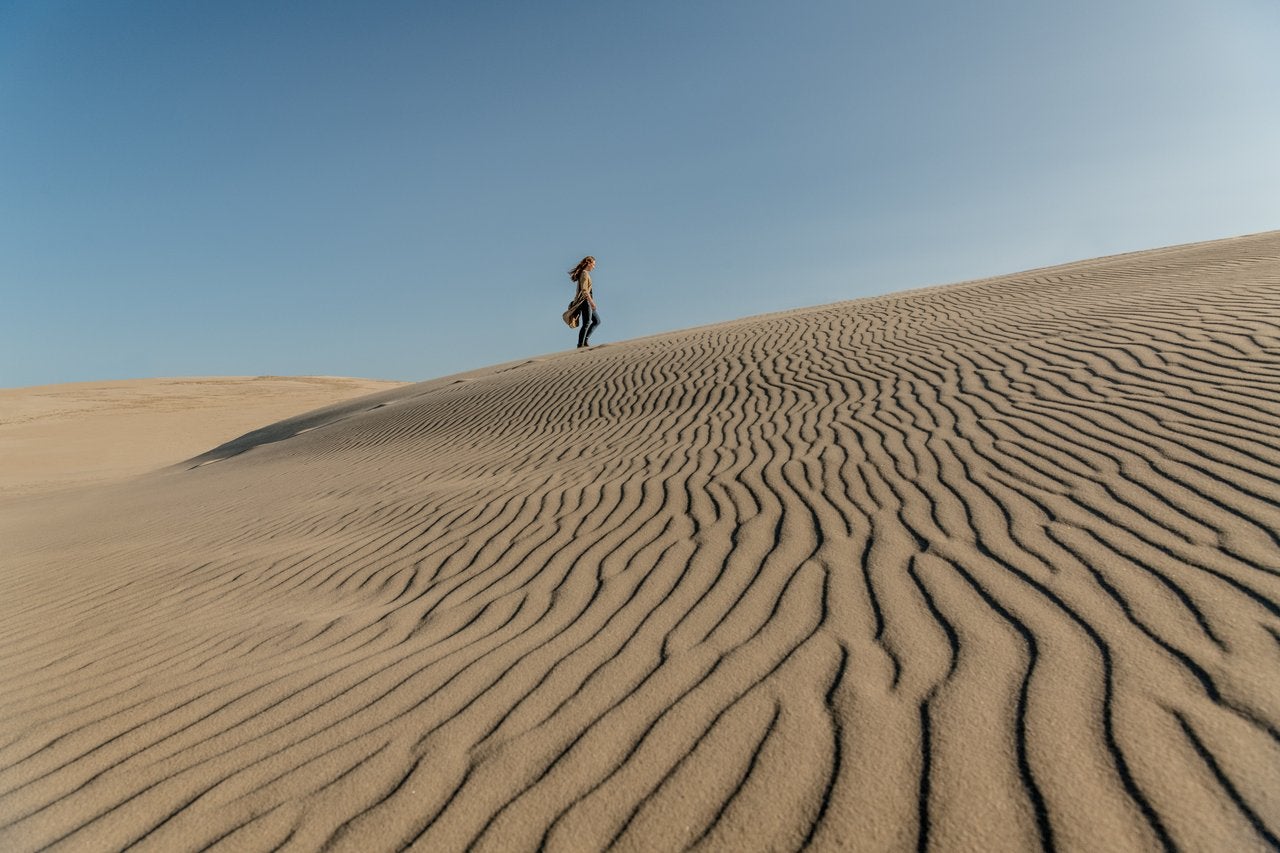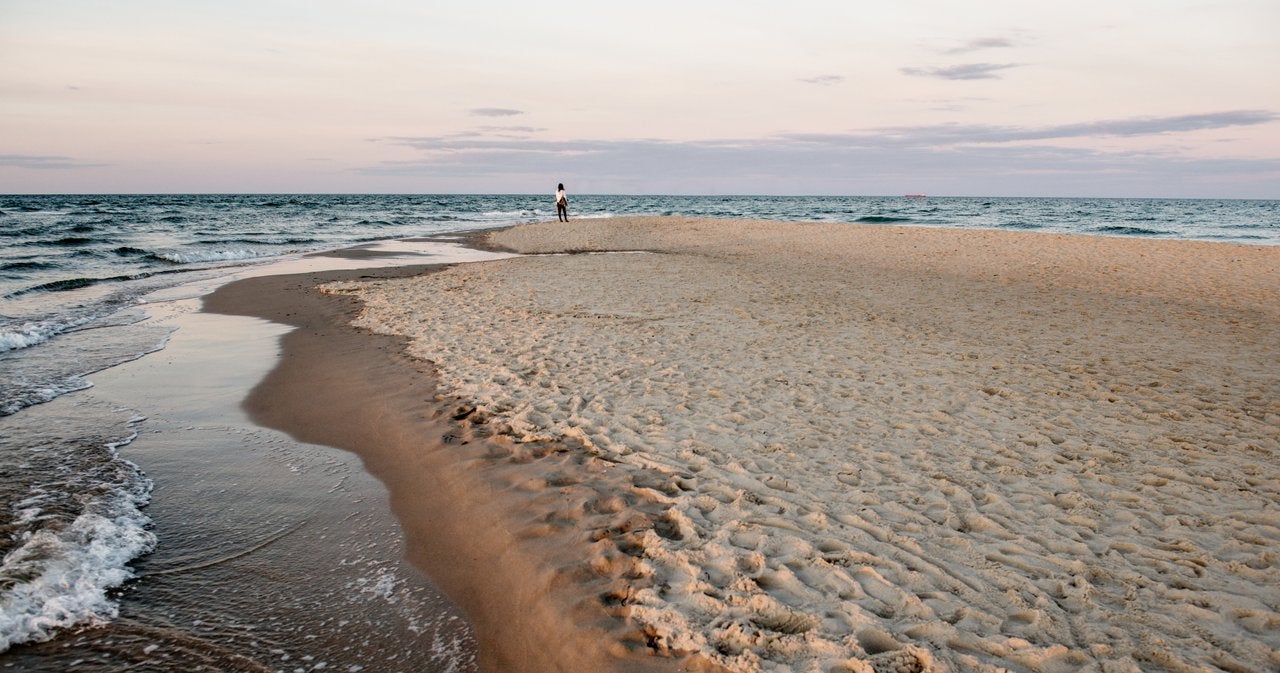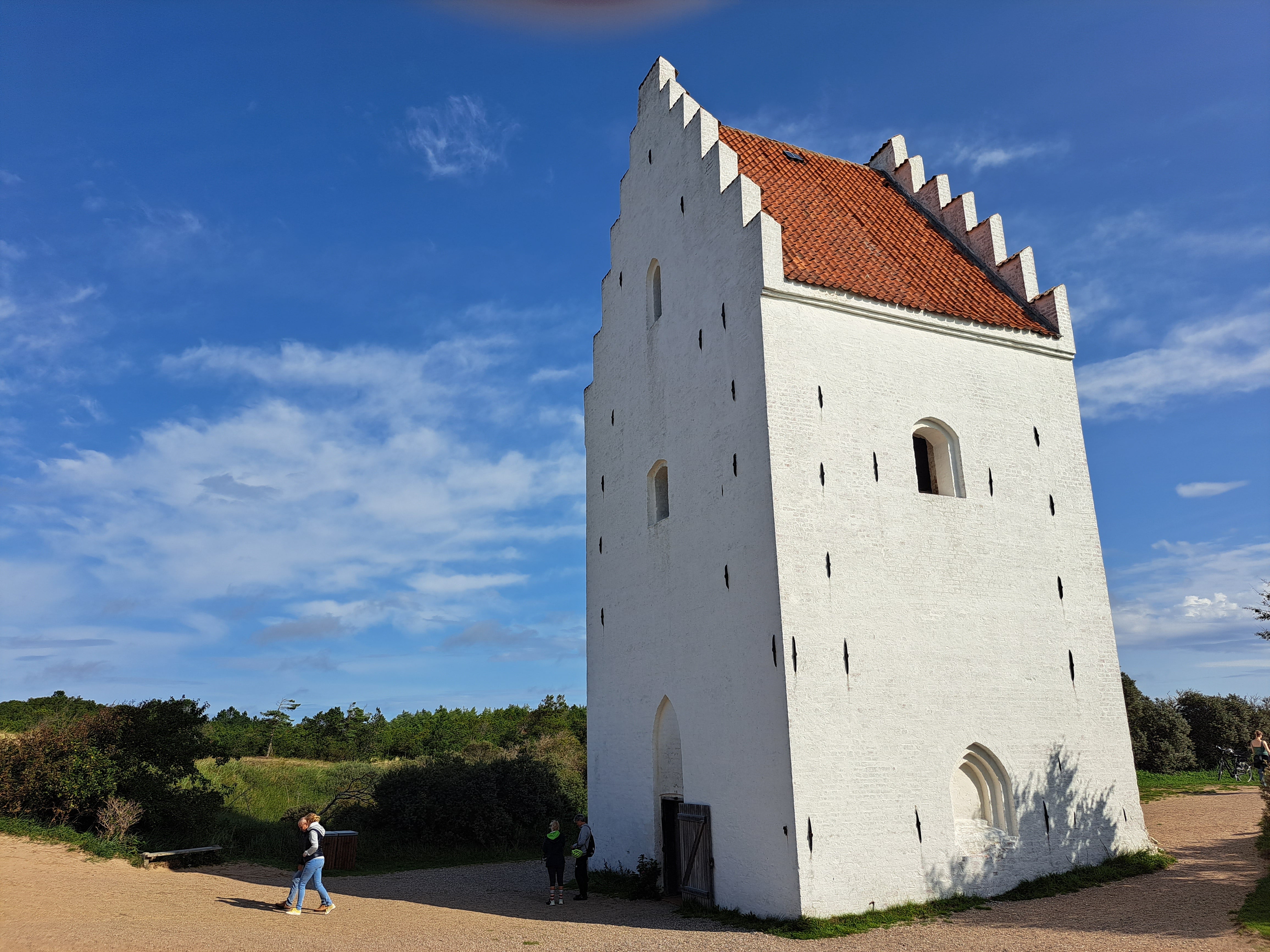What it’s like to hike across Denmark’s remarkable moving sand dune
Exploring the Rabjerg Mile, northern Europe’s biggest, fastest and greediest sand dune, makes for a sensational adventure, finds Joanna Whitehead


An exuberant golden retriever wasn’t on my bingo card when it came to showing me how to behave in one of Europe’s most strange and wonderful natural landscapes. Confronted by a gigantic set of sand dunes set against a cornflower blue early evening sky, and with only the sound of my breath for company, I felt oddly immobilised by the sheer beauty and scale of the unique vista before me.
I padded slowly and tentatively towards the honeyed peaks – consisting roughly of a colossal 3.5 million cubic metres of granules – that constitute Denmark’s Rabjerg Mile. All was still until a rogue pooch that had broken free from its owner tore into view. The dog’s flaxen fur was almost camouflaged among the gently rolling slopes. As it raced and rolled among the dunes with the enthusiasm of a toddler hopped up on sherbet, I began to smile. Following suit, I started to run into the soft, virgin sand.
Denmark famously has no mountains to speak of, which makes the mounds that compose the Rabjerg Mile all the more unique. Situated in the far north of Denmark, these extraordinary drifts are the largest set of migrating dunes in northern Europe, moving at a bewildering 15 metres each year. The dunes are formidable, with a reputation for consuming everything in their path, including plants, trees, and even buildings, with a farmhouse, a lighthouse and even a church swallowed up by this peculiar lunar landscape. Around a quarter of a million people visit each year to gawp and roam around the serene and majestic wonder, which tops 40 metres at its highest point.

While there are various trails surrounding and leading to the Rabjerg Mile, we elected to start our walking tour of the dunes from the backdoor of our hotel, Hjorths Badehotel, a chic, peaceful establishment best suited for those craving sublime seafood and stillness. Still satisfied from the previous night’s feast, we set out before 9am, passing a field of horses and catching the scent of sea salt in the air; Kandestederne Beach is a kilometre away.
Read more on Denmark travel:
As we approach the dunes surrounding the Rabjerg Mile proper, we’re joined by swooping swifts and wagtails. Here, the sands have a heavier covering of grass and we’re amazed at the extensive carpet of purple heather, lichen and colourful flowers. We can’t see a single other person and, save for the occasional bird chirrup, the silence is astonishing. As we venture up and down the slopes, we watch a lone slow worm casually traversing the sands.

While there are small signs directing you on to established routes, part of the fun is simply getting lost in this unusual microclimate. With the clock ticking, we agree to revisit the dunes from the east later in the day. This is the “official” entry point to the Rabjerg Mile and the sand here is largely “pure”, ie not hindered by grass or flower cover, and powder soft. We spot shoes and unlocked bikes discarded by other visitors who are already enjoying the sand and start exploring ourselves. It’s early evening and the wind is gently whistling – and from the highest point, you can see the sea.
Depending on the gradient and wind direction, some parts of the dunes appear to be perfectly smooth, almost sculpted, while other parts are characterised by wavy ridges shaped by the breeze. I notice a couple shooting photos in the distance and another person cross legged in silent contemplation. The sky feels very close. It’s here that the stillness is interrupted by the rogue golden retriever, prompting me to become reacquainted with my inner child. Running into the dunes feels like traversing virgin snow on Christmas Day – joyful, wholesome and weirdly otherworldly. And I’m far from alone in sharing this view; Danish Star Wars fans even campaigned for the Rabjerg Mile to be used as a filming location for the hit film franchise.
The next day, we visit Den Tilsandede Kirke, or the sand-buried church. Skt Laurentius Church was believed to have been built in the latter half of the 14th century, when it was the largest church in the region, gathering the community for four hundred years before drifting sand began to move in. By 1795, the congregation were forced to abandon the church, which is now entirely submerged by sand, with the exception of the tall, narrow tower. It’s a marvel to comprehend and perfectly illustrates the destructive power of the dunes.
Some parts of the dunes appear to be perfectly smooth, almost sculpted, while other parts are characterised by wavy ridges shaped by the breeze
Sand, wind and the flat topography of Denmark have proved to be a fatal combination in years gone by, prompting the creation of an official Sand Drift Act of 1857. This enabled officials to purchase the land surrounding the sands and plant grasses and trees to stabilise it. By the 1950s, they were under control with the exception of the Rabjerg Mile, which has been left to roam freely, a reminder to the local community of nature’s potency. “Now, the sand can go wherever it wants,” Villy Kobsted Hansen, a local nature guide and expert on the dunes, tells me.
The Rabjerg Mile is situated a 20-minute drive from Skagen, a port town on the northeastern peninsula of the country. Renowned for the artists who migrated to this remote and picturesque location in the late 19th century for its rugged scenery and spectacular light, it’s not hard to appreciate the appeal of this luminous arcadia. We visit the Skagen Museum and gaze at an extensive collection of the pastel paintings produced by the Skagen Painters, before wandering the peaceful streets and pastel-coloured houses to Scandinavia’s first, only, and adorable Teddy Bear Museum (Skagens Bamsemuseum). We can’t leave without having dinner at the timeless Brondums Hotel (try the Skagen plaice, served with lingonberries), a historic residence with a classic style that used to be a meeting place of the Skagen Painters.

Venturing to the very tip of the peninsula leads you to Grenen, an exposed sandbar where the Baltic and North Sea meet; it’s customary to stand with one foot in each sea. We take the Sandormen, a tractor bus, back through the sand, before gawping at the coastal views from the top of the Grey Lighthouse. Blink, the diminutive cafe adjacent to the tower, serves up delicious and healthy produce from the local area.
Running into the dunes feels like traversing virgin snow on Christmas Day
While there’s no denying the allure of Skagen, with its big skies and wild landscape, we’re keen to return to the elusive dunes. We arrive close to 8pm to find it near silent, with a gentle breeze. According to Villy, this is the optimum time to visit. “In the evening, from sunset, the dunes are very special,” he tells me. “With a dog or two, simply sitting, watching the sun go down, watching the ocean and the shadows, it’s possible to find some silence.”
Peace, wild nature and wonder are what we came for. The Rabjerg Mile, and this special slice of Denmark, provides it in spades.
Travel essentials
Getting there
Ryanair and Norwegian fly direct to Aalborg from the UK. The Rabjerg Mile is located roughly 60 miles northeast of Aalborg. Hiring a car is the easiest way to reach the dunes, but travelling by public transport is possible. Take a two-hour train from Aalborg to Skagen, before hiring either a taxi or bicycle for the remaining nine miles. Be warned that taxis in Denmark are not cheap, while cycle routes are extensive and flat.
Staying there
Hjorths Badehotel is a peaceful retreat surrounded by fields and sand. The lack of both televisions and wifi aids conversation and connection, complemented by cool interiors and a palate reflecting the natural hues of nature, plus an exceptional kitchen. It’s situated minutes from the Rabjerg Mile, just over half a mile from Kandestederne Beach, and 10 miles from Skagen.
Read more of our best Denmark hotel reviews
Join our commenting forum
Join thought-provoking conversations, follow other Independent readers and see their replies
Comments
Bookmark popover
Removed from bookmarks